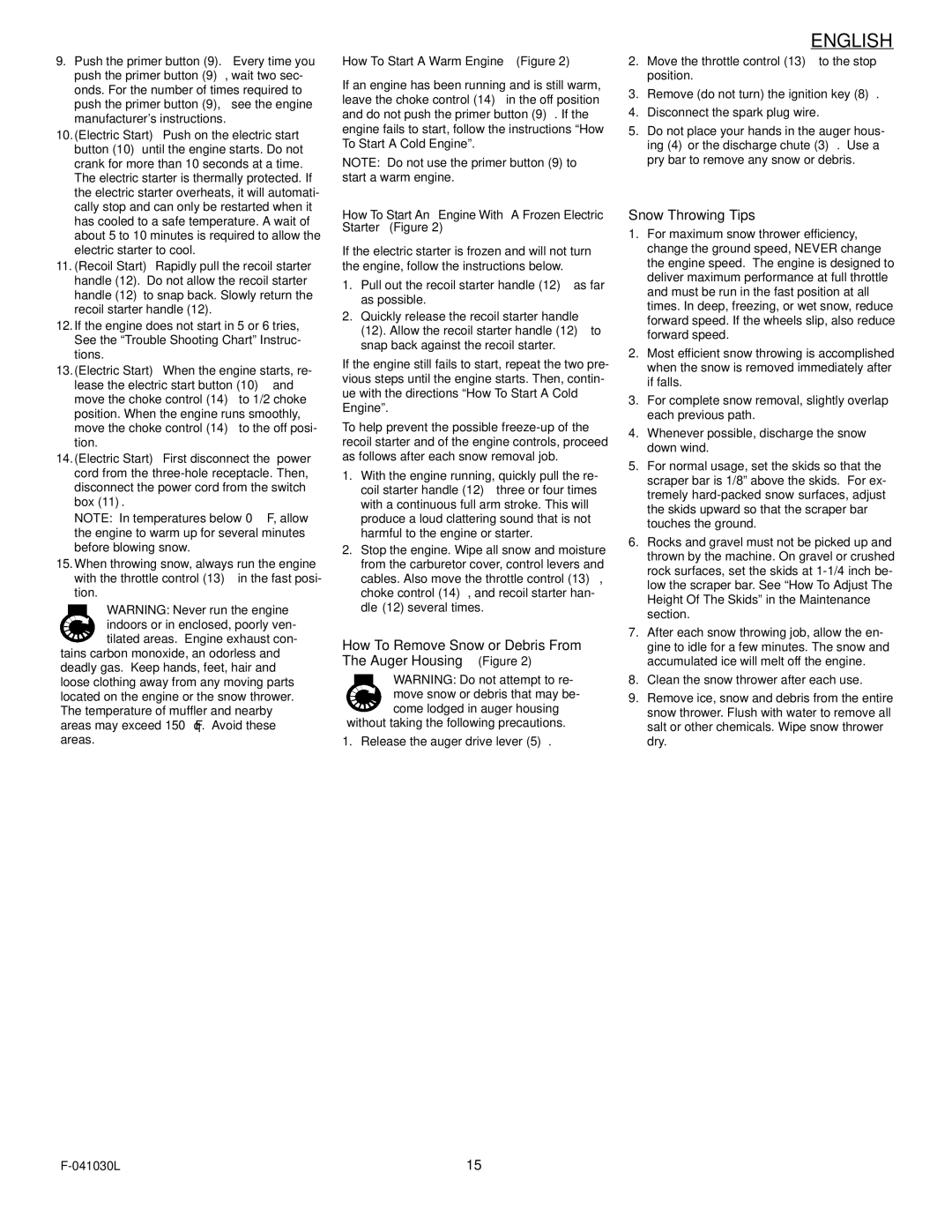629108x84B specifications
The Murray 629108x84B is a robust and high-performing lawn mower designed for both residential and commercial use. Known for its reliability and efficient cutting capabilities, this mower is an ideal choice for anyone looking to maintain pristine lawns with ease.One of the standout features of the Murray 629108x84B is its powerful engine. Equipped with a reliable 163cc gas engine, it offers substantial torque and speed, enabling it to tackle thick grass and uneven terrain effortlessly. This engine ensures that the mower starts quickly and operates smoothly, providing a reliable mowing experience every time.
The cutting deck on the 629108x84B is another impressive feature. With an 84-centimeter cutting width, it allows users to cover a significant area in a shorter amount of time, making yard maintenance more efficient. The deck is designed with high-quality steel, ensuring durability and resistance to wear over time. Additionally, it offers multiple cutting height positions, enabling users to adjust the height according to the type of grass and desired lawn finish.
Another highlight of the Murray 629108x84B is its user-friendly design. The mower is equipped with a self-propelled system that makes it easy to maneuver across all types of terrain. This feature is especially beneficial for those with large yards or inclines, as it reduces physical strain while mowing. The adjustable handle height also allows for comfortable operation, accommodating users of different heights.
In terms of technology, the mower incorporates advanced aerodynamic design to enhance airflow during operation. This feature not only improves cutting efficiency but also reduces clumping of grass clippings, resulting in a cleaner cut and a well-manicured lawn. Furthermore, the mower's side discharge capability allows for effective grass clipping management, ensuring that the lawn remains neat without the need for constant collection.
Safety is a priority in the design of the Murray 629108x84B. It comes with a blade brake mechanism, which ensures that the blades stop quickly when the operator releases the handle. This safety feature prevents accidents and provides peace of mind, especially when mowing in busy areas.
Overall, the Murray 629108x84B combines power, efficiency, and user-friendly features to deliver an outstanding mowing experience. With its strong engine, durable construction, and innovative design, it stands out as a top choice for lawn care enthusiasts and professionals alike. Whether for residential gardens or commercial landscaping, this mower is built to perform and last, making it a valuable investment for maintaining beautiful outdoor spaces.

